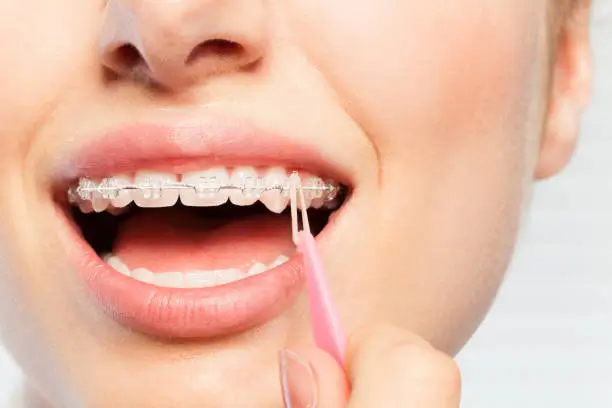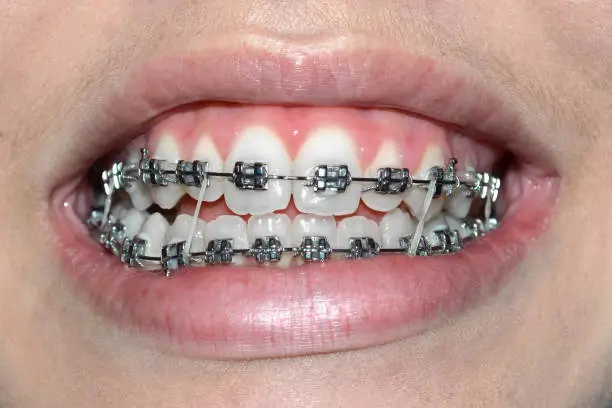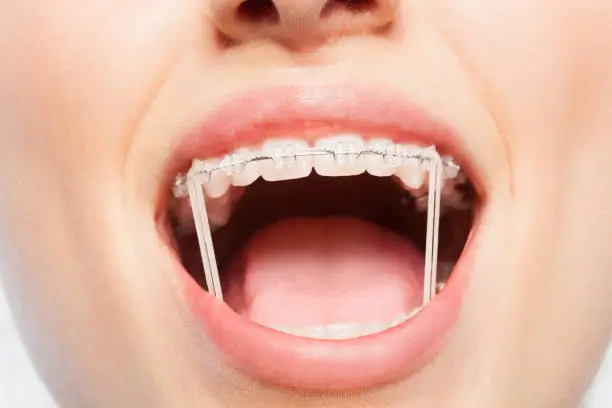Monday & Wednesday
8:00 am - 5:00 pm
Tuesday & Thursday
7:30 am - 4:00 pm
704-549-8878
Call Us Today!
SERVICIOS EN ESPAÑOL

Ever wondered what those colorful little rubber bands do on braces? They might seem insignificant, but at Smart Orthodontics, we know they're secret weapons in your journey to a straighter smile.
Let's delve into the world of these tiny powerhouses and discover how they play a crucial role in achieving the perfect bite and a dazzling grin!
Braces are fantastic tools for straightening teeth, but sometimes they need a little extra teamwork to achieve the perfect results. Brackets and wires work by applying gentle, constant pressure to move your teeth into the desired positions.
However, certain orthodontic issues require more targeted force in specific areas. This is where you may wonder, "What do rubber bands on braces do?"
Rubber bands, also called elastics, act like tiny powerhouses, providing additional targeted pressure to specific areas of your mouth. Think of them as specialized assistants for your braces, focusing on problem areas for a more precise and efficient treatment.
Rubber bands connect to hooks on your brackets, creating a gentle pulling or pushing force between specific teeth or even between your upper and lower jaws. This controlled pressure helps guide your teeth into their ideal positions, correcting misalignments and achieving a perfect bite.
Unlike braces that work on all your teeth at once, rubber bands can target specific areas that require extra attention. For instance, they can help:
There are two main types of rubber bands used in orthodontics:
These tiny elastics pack a big punch when it comes to orthodontic treatment. Here's how they can benefit your smile:
Rubber bands can help correct various bite problems by applying targeted pressure to specific teeth or jaws. Imagine them as tiny sculptors, subtly molding your bite into a harmonious alignment.
In some cases, your jaw itself might need some adjustment. Rubber bands can help move your upper or lower jaw forward or backward for a more balanced and functional bite.
A perfect bite isn't just about aesthetics; it's crucial for proper chewing, speaking, and overall oral health. Rubber bands help fine-tune your bite, ensuring optimal function and a beautiful smile.
Rubber bands come in various forms to suit different needs:
Rubber bands come in different sizes, each exerting a specific level of force. Your orthodontist at Smart Orthodontics will choose the right size based on your treatment plan and the specific adjustments needed.
For those with latex allergies, there are latex-free rubber band options available. Your orthodontist can discuss the best material for your individual needs.
Let's face it, braces can feel a bit overwhelming, especially for younger patients. The good news is that rubber bands often come in a variety of fun colors that can match your braces! This can add a touch of personalization and make orthodontic treatment a little more exciting.
To get the most out of your rubber bands, here are some key things to remember:
Your orthodontist will provide specific instructions on how to wear your rubber bands, including how often to change them and how to put them on and off. Following these instructions carefully is essential for successful treatment.
Rubber bands lose their elasticity over time. To maintain consistent pressure, you'll need to change them according to your orthodontist's instructions. This could be daily, every other day, or even just before your next appointment.
Be gentle when putting on and taking off your rubber bands. Applying too much force can damage your brackets or teeth.
While rubber bands are a powerful tool, they can also come with some initial challenges. Here's how to address some common concerns:
It's normal to experience some discomfort, especially when you first start wearing rubber bands. This is because they apply new pressure to your teeth and jaw. The good news is that this discomfort usually subsides within a few days. Here are some tips to cope:
Don't panic if you lose or break a rubber band. Here's what to do:
Rubber bands can trap food particles around your brackets, increasing your risk of cavities and gum disease. Here's how to maintain good oral hygiene:

A beautiful smile takes time and dedication, but the results are worth it! Here are some things to keep in mind:
It's important to be patient. Orthodontic treatment is a gradual process, and it can take months or even years to achieve your desired results. The answer to the question is all about making these adjustments happen efficiently.
The success of your treatment depends on your commitment to following your orthodontist's instructions. This includes wearing your rubber bands as directed, attending all your appointments, and maintaining good oral hygiene.
The end result of your orthodontic journey is a beautiful and functional smile. Straight teeth not only enhance your appearance but also improve your oral health by making it easier to clean your teeth and reducing your risk of gum disease.
At Smart Orthodontics, we know that a beautiful smile boosts confidence and well-being. We provide top-quality care in a supportive environment, using the latest technologies like braces and clear aligners. Our experienced team creates customized treatment plans and maintains open communication throughout your journey.
Schedule a free consultation to discuss your goals and find the best treatment for your needs. Let us help you unlock the confidence of a beautiful smile!

Rubber bands might seem small, but they play a vital role in achieving a healthy and beautiful smile. By understanding their purpose, wearing them correctly, and following your orthodontist's instructions, you can maximize the benefits of these tiny powerhouses.
Ready to start your journey to a straighter smile? We offer a free consultation to discuss your individual needs and create a personalized treatment plan. We look forward to helping you achieve your dream smile!
Check out Smart Orthodontics Office hours to plan your visit.